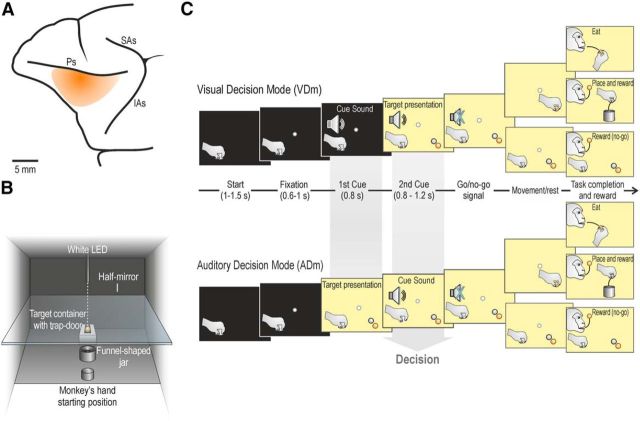Figure 1.
Recorded region, apparatus, and temporal sequence of task events. A, Schematic view of the VLPFC region investigated in the present study. Ps, Principal sulcus; SAs, superior arcuate sulcus; IAs, inferior arcuate sulcus. B, Box and apparatus settled for performing the action sequence task, seen from the monkey's point of view. C, The task was constituted by a fixed sequence of events that could be run in two modes, depending on the order of presentation of the two cues (sound and target) whose integration allowed the monkey to decide what to do next, namely: (1) grasp-to-eat, (2) grasp-to-place, (3) refrain from grasping an object, or (4) refrain from grasping a food pellet. The monkey could select what to do next (decision) either following the visual presentation of the target (in the VDm) or following the presentation of the cue sound (in the ADm). Both monkeys performed the task with a considerable success rate (92% M1 and 83% M2), with clearly more errors during go (7% M1, and 15% M2) relative to no-go (1% M1 and 2% M2) trials, due to errors in the motor execution, which could happen only in the former type of trials. The reaction time during food and object go-trials (N = 100 for each monkey, randomly selected from 20 different recording sessions) were similar in both animals (M1: food 489 ± 205 ms, object 485 ± 221 ms, t = 0.19, not significant; M2: food 524 ± 121 ms, object 542 ± 133 ms, t = 0.97, not significant).

